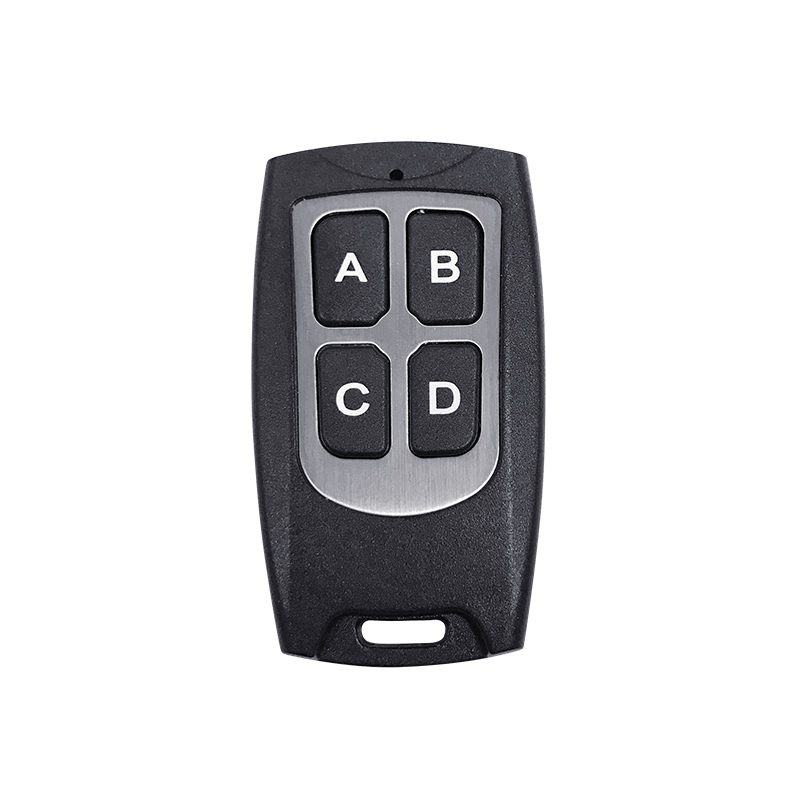Universal garage door remotes are designed to simplify life by allowing a single device to operate multiple garage door openers from different manufacturers. However, the question remains: Are these universal remotes truly compatible with all garage door openers? This article explores the factors that determine compatibility, the technology behind universal remotes, and practical tips for ensuring successful integration.

1. Understanding Universal Garage Door Remotes
Universal garage door remotes aim to provide a one-size-fits-all solution by being programmable to work with various brands and models of garage door openers. They offer convenience by reducing the need for multiple remotes, especially for households with more than one garage door or for users who manage multiple properties.
2. Key Factors Affecting Compatibility
a. Frequency Range: Garage door openers operate on specific radio frequencies, which can vary by manufacturer and model. Common frequencies include 300 MHz, 310 MHz, 315 MHz, 318 MHz, and 390 MHz. A universal remote must support the frequency used by the garage door opener to ensure compatibility. Most modern universal remotes are designed to cover a wide range of these frequencies.
b. Operating Systems: Garage door openers use different coding systems to communicate with remotes. The main types are:
Fixed Code Systems: Older garage door openers often use fixed codes where the remote and opener are set to a specific, unchanging code.
Rolling Code Systems: Modern openers typically use rolling code technology (such as Security+ from LiftMaster/Chamberlain), which enhances security by changing the code with each operation. Universal remotes must be compatible with both fixed and rolling code systems. While many universal remotes support rolling codes, verifying this compatibility before purchase is essential.
c. Brand Compatibility: Universal remotes are generally designed to be compatible with major garage door opener brands like LiftMaster, Chamberlain, Genie, Craftsman, and more. However, it is crucial to check the remote's specifications or packaging for a list of supported brands and models to ensure compatibility with your specific opener.
3. Programming Universal Garage Door Remotes
a. Learn Button Method: Most modern garage door openers have a "learn" button used to sync new remotes. The process typically involves pressing the learn button on the opener and then pressing a button on the universal remote to complete the pairing. Detailed instructions may vary by manufacturer, so consulting the manuals for both the opener and the remote is advisable.
b. DIP Switches: For older garage door openers using fixed codes, universal remotes may include DIP switches that need to be set to match the opener's code. This involves manually setting the switches on the remote to correspond with those on the opener.
4. Limitations and Challenges
a. Age of the Opener: Older garage door openers may not be compatible with modern universal remotes, especially if they use outdated technology or unsupported frequencies. In such cases, replacing the opener's receiver or using a compatible brand-specific remote might be necessary.
b. Unique Technologies: Some garage door openers employ proprietary technologies or unique frequencies that are not supported by all universal remotes. Openers with integrated smart home systems or advanced security features may require specific remotes designed by the manufacturer.
c. Range and Interference: The effective range of the remote and potential interference from other wireless devices can impact performance. Ensuring that the remote has sufficient range and operates on a clear frequency can help mitigate these issues.
5. Advantages of Universal Garage Door Remotes
a. Convenience: Universal remotes consolidate multiple remotes into one, reducing clutter and simplifying the control of multiple garage doors.
b. Cost-Effective: Purchasing a universal remote can be more economical than buying multiple brand-specific remotes, especially for users managing several garage doors.
c. Backup Solution: Universal remotes can serve as a backup if the original remote is lost, damaged, or otherwise unavailable.
6. Tips for Ensuring Compatibility
a. Research and Verification: Before purchasing, research the specific universal remote model and verify its compatibility with your garage door opener’s brand, frequency, and operating system. Manufacturer websites and customer reviews can provide valuable insights.
b. Manufacturer Support: Look for support from the remote manufacturer, such as compatibility charts, customer service, and online resources to assist with programming and troubleshooting.
c. Return Policy: Ensure that the seller offers a return policy. This allows you to return the remote if it proves incompatible with your garage door opener.
Conclusion
Universal garage door remotes offer a versatile and convenient solution for managing multiple garage door openers. While they are designed to be broadly compatible, ensuring successful integration requires attention to factors such as frequency range, operating systems, and brand compatibility. By conducting thorough research, following proper programming procedures, and utilizing available support resources, users can benefit from the simplicity and convenience that universal garage door remotes provide.

-
Office ViewQinuo Electronics Co., Ltd.was founded in 2009,it is a high-tech company that integrated R & D, manufacturing, sales and service for 15 years,which is mainly specialized in providing sensors of automatic door, control system of door and gate, car key remote, auto parts etc. The company currently has four independent brands: U-CONTROL, U-SENSORS, U-AUTOGATES and U-AUTOKEYS.
-
got questions? call us
+86 13960286508
-
fax :
+86 595 22901208 -
Email :
[email protected]
-
address
- No.991 Xingxiu Road,Taiwanese Investment Zone, Quanzhou, Fujian Province,P.R.China











